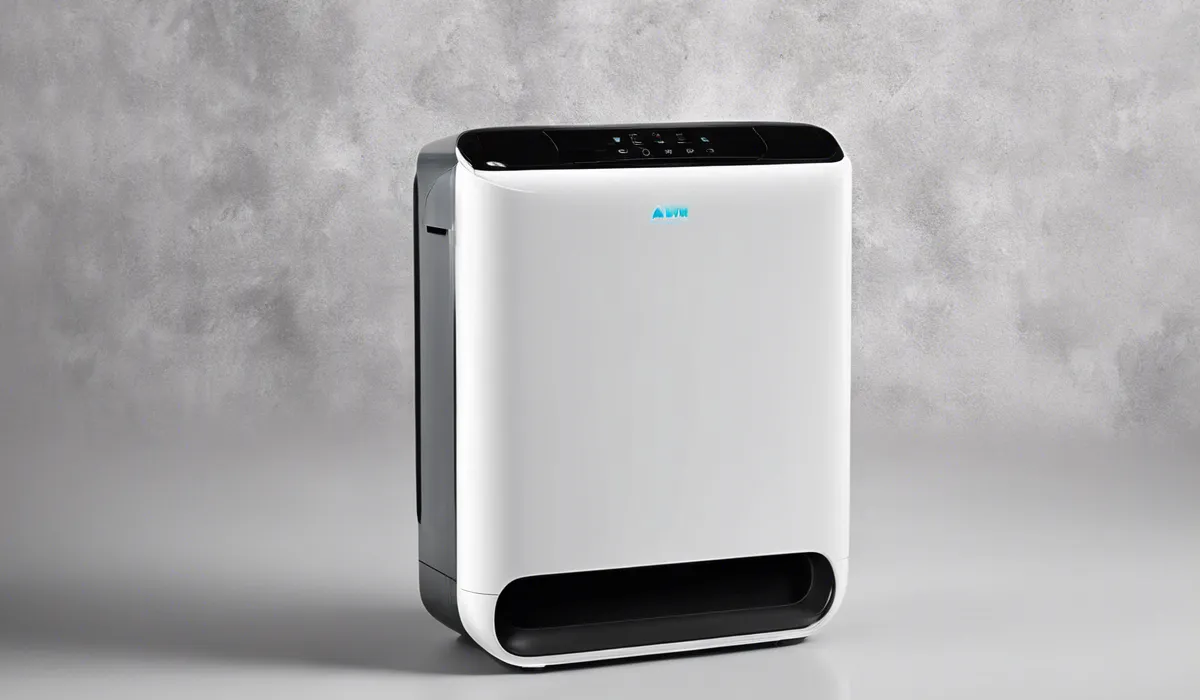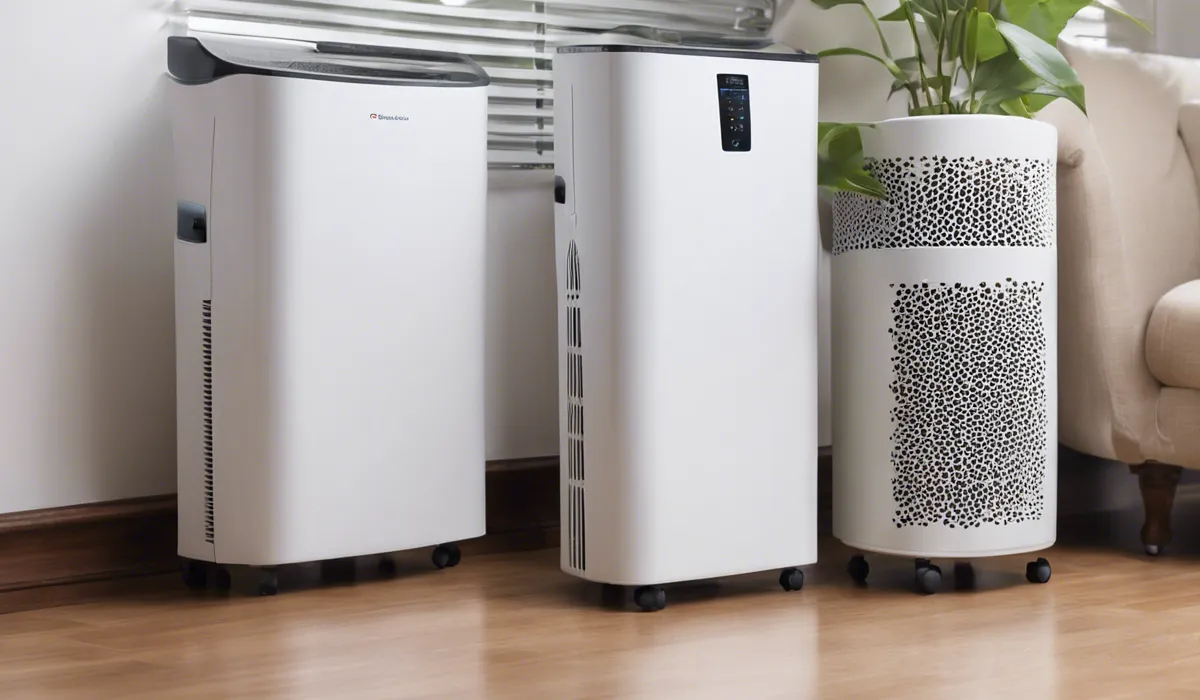The best air purifier for mold is one with a HEPA filter, which captures mold spores effectively. Additionally, an air purifier with a UV-C light can kill mold spores, preventing growth. Look for units with high CADR ratings for better air filtration.
Understanding Mold and Its Impact on Indoor Air Quality

Explanation of Mold and Common Types Found in Homes
Mold is a type of fungus that can grow indoors and outdoors, thriving in moist environments.
It reproduces through tiny spores that float through the air. Common types of mold found in homes include Aspergillus, Cladosporium, and Stachybotrys chartarum, often known as black mold.
Understanding the different types of mold is essential for effective removal and prevention.
Health Risks Associated with Mold Exposure
Exposure to mold can lead to various health issues, particularly for those with allergies or asthma.
Symptoms may include coughing, wheezing, throat irritation, and skin rashes. In more severe cases, mold exposure can lead to lung infections. Therefore, maintaining good indoor air quality is crucial for health.
How Mold Spores Spread in Indoor Environments?
Mold spores can enter homes through open windows, doors, or ventilation systems. Once inside, they can attach to clothing, shoes, or pets.
Mold growth can occur in damp areas such as bathrooms, kitchens, and basements. Effective air purification can help reduce the spread of mold spores indoors.
Importance of Air Purification in Combating Mold
Using an air purifier is a proactive step in reducing mold spores in the air. This can mitigate the risk of mold-related health issues and improve overall indoor air quality, making it an essential tool in maintaining a healthy home environment.
Key Features to Look for in an Air Purifier for Mold

HEPA Filtration: Capturing Mold Spores
A High-Efficiency Particulate Air (HEPA) filter is designed to capture 99.97% of particles as small as 0.3 microns, which includes mold spores.
This level of filtration is critical for those looking to reduce the presence of mold in their homes.
Activated Carbon Filters: Removing Mold Odors
While HEPA filters capture spores, activated carbon filters are effective at eliminating the musty odors that mold produces.
These filters absorb volatile organic compounds (VOCs) and other gases, ensuring the air smells clean and fresh.
UV-C Light: Disinfecting Air by Killing Mold Spores
UV-C light has germicidal properties, meaning it can destroy the DNA of mold spores, effectively killing them and preventing further growth.
This feature is crucial for an air purifier aimed at combating mold.
CADR Rating: Ensuring Adequate Air Filtration for Room Size
The Clean Air Delivery Rate (CADR) measures how effectively an air purifier filters air for a specific room size.
A higher CADR rating indicates more efficient air purification, which is necessary for larger rooms.
Air Changes per Hour (ACH)
ACH indicates how many times an air purifier can exchange the air within a room in one hour. A higher ACH rating means the air is cycled and purified more frequently, which is beneficial for mold-prone environments.
Durability and Maintenance
An air purifier’s durability and the ease with which its filters can be replaced are important considerations.
Regular maintenance is essential for effective mold spore removal, and a durable air purifier ensures long-term reliability.
Top Air Purifiers for Mold on the Market

Model 1: Features, Pros, Cons, and User Experiences
The first model is known for its exceptional HEPA filtration and sleek design. Users appreciate its quiet operation and smart sensors that adjust settings based on air quality. However, some users have noted that replacement filters can be costly.
Model 2: Features, Pros, Cons, and User Experiences
This model includes both HEPA and activated carbon filters, offering comprehensive mold spore and odor removal. It is praised for its energy efficiency but has a lower CADR rating, making it better suited for smaller rooms.
Model 3: Features, Pros, Cons, and User Experiences
Model 3 stands out with its UV-C light feature, adding an extra layer of protection against mold. Users have reported significant improvements in air quality. Some users, however, find the unit slightly louder than competitors.
Model 4: Features, Pros, Cons, and User Experiences
Known for its high CADR rating, Model 4 is ideal for larger spaces. It has a robust ACH rating and is durable, but some users have found it to be bulkier than other models, making it less ideal for small apartments.
Model 5: Features, Pros, Cons, and User Experiences
Model 5 is a budget-friendly option with good performance. It includes a HEPA filter and has a decent CADR rating. While it does not have a UV-C light, it is a great entry-level option according to user feedback.
Comparison and Key Takeaways Regarding the Best Air Purifier for Mold
When comparing these models, consider factors such as the size of the space, the severity of mold issues, and budget constraints.
The best air purifier for mold will have a combination of HEPA filtration, UV-C light, and an appropriate CADR rating for your room size.
User experiences often highlight the importance of noise level and the frequency of maintenance required, so factor these into your decision-making process as well.
FAQs About Best Air Purifier for Mold
What features should the best air purifier for mold have?
The best air purifier for mold should have a HEPA filter for capturing mold spores and possibly a UV-C light to kill the spores, preventing their growth.
Can HEPA air purifiers remove mold spores from the air?
Yes, HEPA air purifiers are designed to capture mold spores effectively from the air.
Do UV-C light air purifiers actually kill mold?
Yes, air purifiers with UV-C light can kill mold spores, which helps to prevent their growth and spread.
What is a CADR rating and why is it important for an air purifier?
CADR rating stands for Clean Air Delivery Rate, indicating the volume of filtered air an air purifier delivers, with higher ratings pointing to more effective filtration.
How do I choose the right size air purifier for my room to combat mold?
To choose the right size air purifier for mold, match the unit’s CADR rating to the size of your room, ensuring it can filter the air effectively.
Final Thoughts
The optimal air purifier for combating mold features a HEPA filter for trapping spores and may include UV-C light technology to destroy them, halting their proliferation.
Units with higher CADR ratings are preferable as they indicate more efficient air filtration capabilities.
